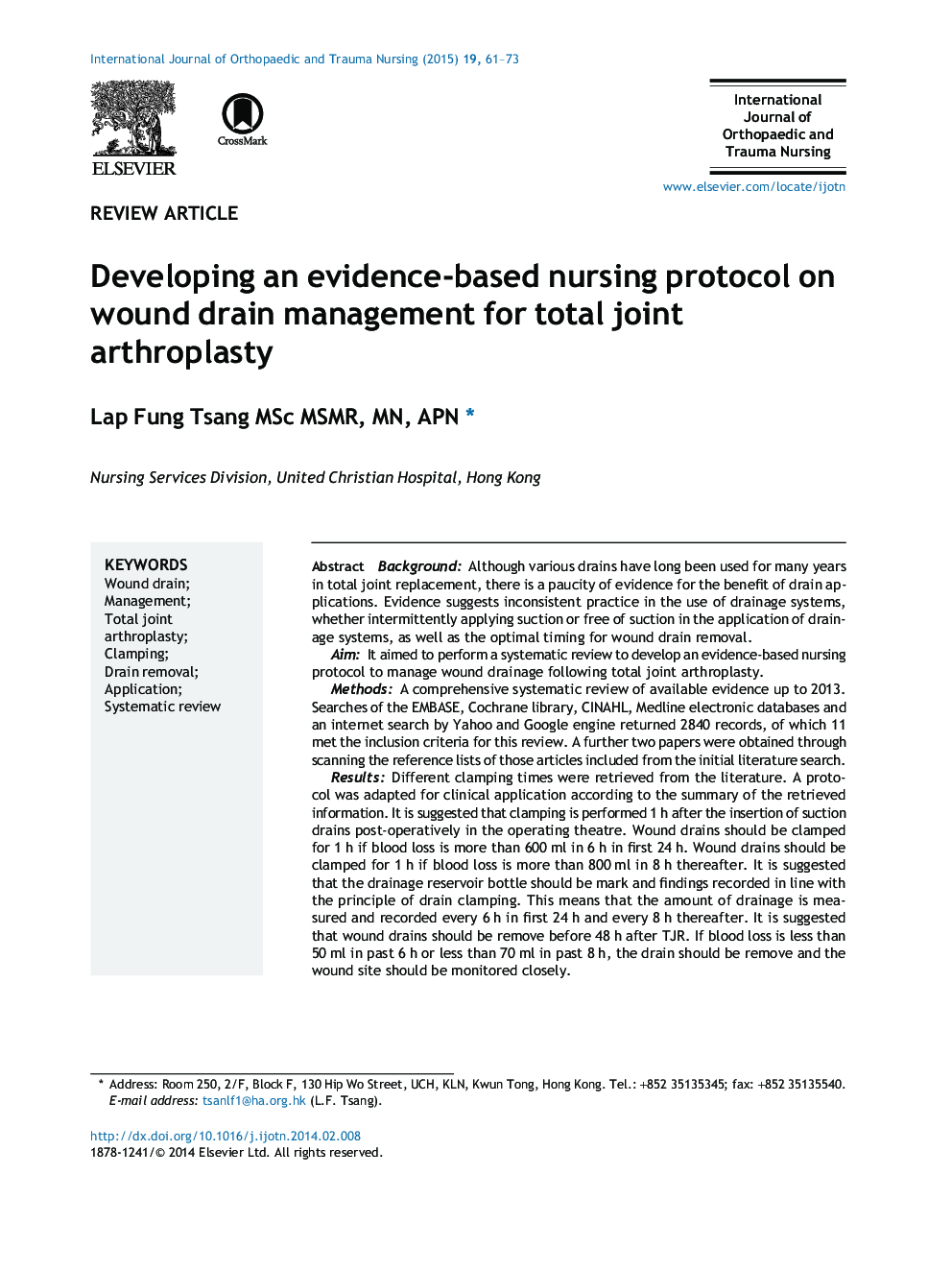| کد مقاله | کد نشریه | سال انتشار | مقاله انگلیسی | نسخه تمام متن |
|---|---|---|---|---|
| 2652710 | 1563985 | 2015 | 13 صفحه PDF | دانلود رایگان |
BackgroundAlthough various drains have long been used for many years in total joint replacement, there is a paucity of evidence for the benefit of drain applications. Evidence suggests inconsistent practice in the use of drainage systems, whether intermittently applying suction or free of suction in the application of drainage systems, as well as the optimal timing for wound drain removal.AimIt aimed to perform a systematic review to develop an evidence-based nursing protocol to manage wound drainage following total joint arthroplasty.MethodsA comprehensive systematic review of available evidence up to 2013. Searches of the EMBASE, Cochrane library, CINAHL, Medline electronic databases and an internet search by Yahoo and Google engine returned 2840 records, of which 11 met the inclusion criteria for this review. A further two papers were obtained through scanning the reference lists of those articles included from the initial literature search.ResultsDifferent clamping times were retrieved from the literature. A protocol was adapted for clinical application according to the summary of the retrieved information. It is suggested that clamping is performed 1 h after the insertion of suction drains post-operatively in the operating theatre. Wound drains should be clamped for 1 h if blood loss is more than 600 ml in 6 h in first 24 h. Wound drains should be clamped for 1 h if blood loss is more than 800 ml in 8 h thereafter. It is suggested that the drainage reservoir bottle should be mark and findings recorded in line with the principle of drain clamping. This means that the amount of drainage is measured and recorded every 6 h in first 24 h and every 8 h thereafter. It is suggested that wound drains should be remove before 48 h after TJR. If blood loss is less than 50 ml in past 6 h or less than 70 ml in past 8 h, the drain should be remove and the wound site should be monitored closely.ConclusionThis paper has guided nurses to develop an evidence-based protocol to improve patient care on wound drain management. Further study is necessary to evaluate the effectiveness of the protocol.
Journal: International Journal of Orthopaedic and Trauma Nursing - Volume 19, Issue 2, May 2015, Pages 61–73
